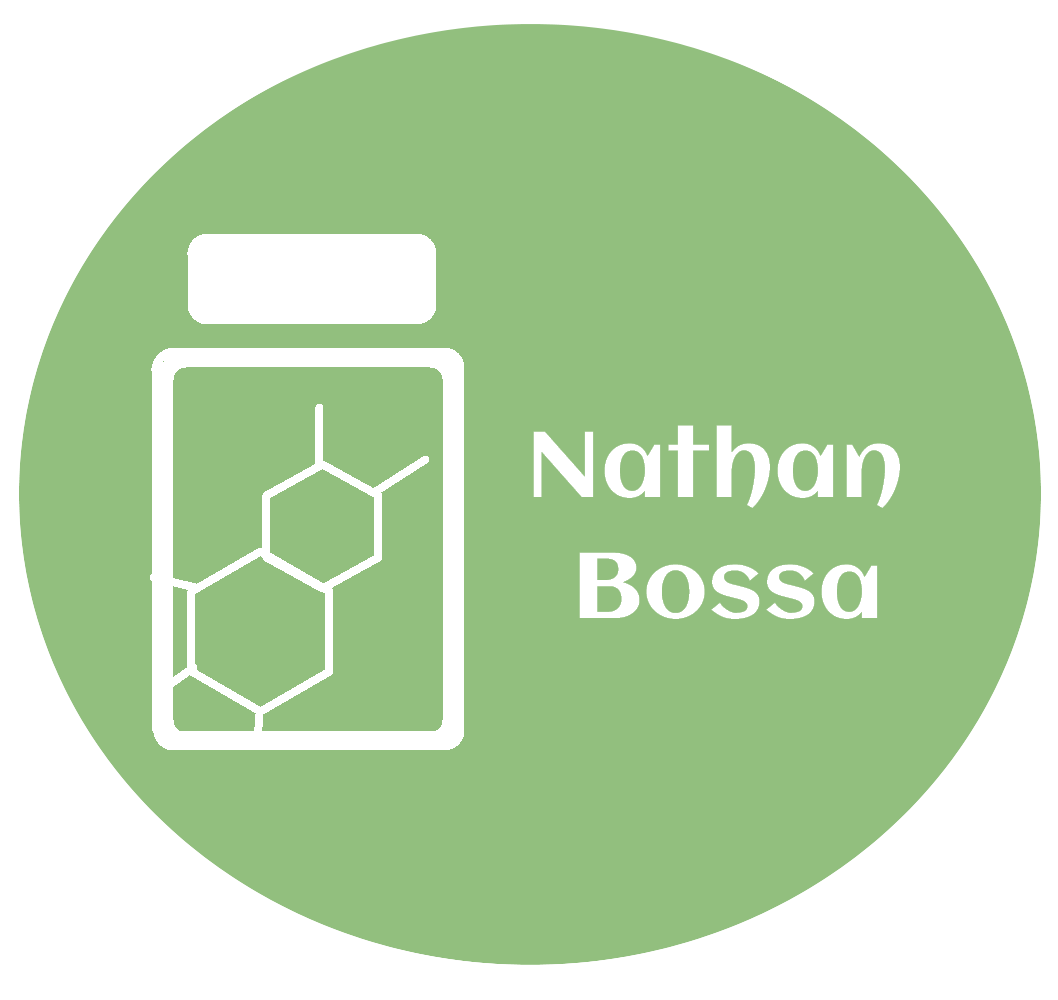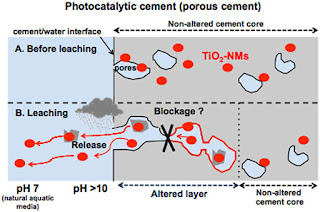Nathan Bossa - Selection of research publications
__________________________________________________________________________________________________________________________________________
- Gold nanoparticle biodissolution by a freshwater macrophyte and its associated microbiome. A. Avellan, M. Simonin, E. McGivney, N. Bossa, E. Spielman-Sun, J.D. Rocca, E.S. Bernhardt, N.K Geitner, J.M Unrine, M.R. Wiesner, G.V. Lowry. Nature nanotechnology. 2018
Abstract: Predicting nanoparticle fate in aquatic environments requires mimicking of ecosystem complexity to observe the geochemical processes affecting their behaviour. Here, 12 nm Au nanoparticles were added weekly to large-scale freshwater wetland mesocosms. After six months, ~70% of Au was associated with the macrophyte Egeria densa, where, despite the thermodynamic stability of Au0 in water, the pristine Au0 nanoparticles were fully oxidized and complexed to cyanide, hydroxyls or thiol ligands. Extracted biofilms growing on E. densa leaves were shown to dissolve Au nanoparticles within days. The Au biodissolution rate was highest for the biofilm with the lowest prevalence of metal-resistant taxa but the highest ability to release cyanide, known to promote Au0 oxidation and complexation. Macrophytes and the associated microbiome thus form a biologically active system that can be a major sink for nanoparticle accumulation and transformations. Nanoparticle biotransformation in these compartments should not be ignored, even for nanoparticles commonly considered to be stable in the environment.
__________________________________________________________________________________________________________________________________________
- Micro and nano X-ray computed-tomography: a step forward in the characterization of the pore network of a leached cement paste. N. Bossa, P. Chaurand , J. Vicente, D. Borschneck, C. Levard, O. Aguerre-Chariol, J. Rose, Cement and Concrete Research. 2016
Abstract: Pore structure of leached cement pastes (w/c = 0.5) was studied for the first time from micro-scale down to the nano-scale by combining micro- and nano-X-ray computed tomography (micro- & nano-CT). This allowed assessing the 3D heterogeneity of the pore network along the cement profile (from the core to the altered layer) of almost the entire range of cement pore size, i.e. from capillary to gel pores. We successfully quantified an increase of porosity in the altered layer at both resolutions. Porosity is increasing from 1.8 to 6.1% and from 18 to 58% at the micro-(voxel = 1.81 μm) and nano-scale (voxel = 63.5 nm) respectively. The combination of both CT allowed to circumvent weaknesses inherent of both investigation scales. In addition the connectivity and the channel size of the pore network were also evaluated to obtain a complete 3D pore network characterization at both scales.
__________________________________________________________________________________________________________________________________________
- Cellulose Nanocrystal-Zero Valent Iron Nanocomposites For groundwater remediation. N. Bossa, A. W. Carpenter, N. Kumar, C. F De Lannoy, M.Wiesner, Environmental science. Nano. 2017
Abstract: Zero-valent iron nanoparticles (nano-ZVIs) have been widely studied for in situ remediation of groundwater and other environmental matrices. Nano-ZVI particle mobility and reactivity are still the main impediments in achieving efficient in situ groundwater remediation. Compared to the nano-ZVI “coating” strategy, nano-ZVI stabilization on supporting material allows direct contact with the contaminant, reduces the electron path from the nano-ZVI to the target contaminant and increases nano-ZVI reactivity. Herein, we report the synthesis of nano-ZVI stabilized by cellulose nanocrystal (CNC) rigid nanomaterials (CNC-nano-ZVI; Fe/CNC = 1 w/w) with two different CNC functional surfaces (–OH and –COOH) using a classic sodium borohydride synthesis pathway. The final nanocomposites were thoroughly characterized and the reactivity of CNC-nano-ZVIs was assessed by their methyl orange (MO) dye degradation potential. The mobility of nanocomposites was determined in (sand/glass bead) porous media by utilizing a series of flowthrough transport column experiments. The synthesized CNC-nano-ZVI provided a stable colloidal suspension and demonstrated high mobility in porous media with an attachment efficiency (α) value of less than 0.23. In addition, reactivity toward MO increased up to 25% compared to bare ZVI. The use of CNC as a delivery vehicle shows promising potential to further improve the capability and applicability of nano-ZVI for in situ groundwater remediation and can spur advancements in CNC-based nanocomposites for their application in environmental remediation.
__________________________________________________________________________________________________________________________________________
- A review of the environmental implications of in situ remediation by nanoscale zero valent iron (nZVI): Behavior, transport and impacts on microbial communities. E. Lefevre, N. Bossa, M. Wiesner. C. Gunsch, Science of the Total Environment. 2016


Abstract: The increasing use of strategies incorporating nanoscale zero valent iron (nZVI) for soil and groundwater in situ remediation is raising some concerns regarding the potential adverse effects nZVI could have on indigenous microbial communities and ecosystem functioning. This review provides an overview of the current literature pertaining to the impacts of nZVI applications on microbial communities. Toxicity studies suggest that cell membrane disruption and oxidative stress through the generation of Fe2 + and reactive oxygen species by nZVI are the main mechanisms contributing to nZVI cytotoxicity. In addition, nZVI has been shown to substantially alter the taxonomic and functional composition of indigenous microbial communities. However, because the physico-chemical conditions encountered in situ highly modulate nZVI toxicity, a better understanding of the environmental factors affecting nZVI toxicity and transport in the environment is of primary importance in evaluating the ecological consequences that could result from a more extensive use of nZVI.
__________________________________________________________________________________________________________________________________________
- Environmental exposure to TiO2 nanomaterials incorporated in building material. N. Bossa, P. Chaurand , C. Levard, D. Borschneck, H. Miche, J. Vicente, C. Geantet, O. Aguerre-Chariol, F.M. Michel, J. Rose, Environmental Pollution. 2017
Abstract: Nanomaterials are increasingly being used to improve the properties and functions of common building materials. A new type of self-cleaning cement incorporating TiO2 nanomaterials (TiO2-NMs) with photocatalytic properties is now marketed. This promising cement might provide air pollution-reducing properties but its environmental impact must be validated. During cement use and aging, an altered surface layer is formed that exhibits increased porosity. The surface layer thickness alteration and porosity increase with the cement degradation rate. The hardened cement paste leaching behavior has been fully documented, but the fate of incorporated TiO2-NMs and their state during/after potential release is currently unknown. In this study, photocatalytic cement pastes with increasing initial porosity were leached at a lab-scale to produce a range of degradation rates concerning the altered layer porosity and thickness. No dissolved Ti was released during leaching, only particulate TiO2-NM release was detected. The extent of release from this batch test simulating accelerated worst-case scenario was limited and ranged from 18.7 ± 2.1 to 33.5 ± 5.1 mg of Ti/m2 of cement after 168 h of leaching. TiO2-NMs released into neutral aquatic media (simulate pH of surface water) were not associated or coated by cement minerals. The TiO2-NM release mechanism is suspected to start from freeing of TiO2-NMs in the altered layer pore network due to partial cement paste dissolution followed by diffusion into the bulk pore solution to the surface. The extent of TiO2-NM release was not solely related to the cement degradation rate.
__________________________________________________________________________________________________________________________________________
- Incorporation of Cellulose Nanocrystals (CNCs) into the Polyamide Layer of Thin-Film Composite (TFC) Nanofiltration Membranes for Enhanced Separation Performance and Antifouling Properties. L.Bai, Y. Liu, N.Bossa, A.Ding, N.Ren, G. Li, H.Liang, M.R. Wiesner. Environmental Science and Technology. 2018
Abstract: The inherent properties of hydrophilicity and mechanical strength of cellulose nanocrystals (CNCs) make them a possible alternative to carbon nanotubes (CNTs) that may present fewer objections to application water-treatment membranes. In this work, the hydrophilicity and mechanical properties of CNCs and CNTs nanocomposite poly(ether sulfone) (PES) membranes were characterized and compared. Membrane pore geometry was analyzed by scanning electron microscopy (SEM). Overall porosity and mean pore radius were calculated based on a wet–dry method. Results showed that PES polymers were loosely packed in the top layer of both the CNC- and CNT-composite membranes (CNC-M and CNT-M). The porosity of the CNC-M was greater than that of the CNT-M. Membrane hydrophilicity, measured by water-contact angle, free energy of cohesion, and water flux, was increased through the addition of either CNCs or functionalized CNTs to an otherwise hydrophobic polymer membrane. The hydrophilicity of the CNC-M was greater than the CNT-M. In addition, the Young’s modulus and tensile strength was enhanced for both the CNC-M and CNT-M. While smaller concentrations of CNTs were required to achieve an equal increase in Young’s modulus compared with the CNCs, the elasticity of the CNC-composite membranes was greater.










